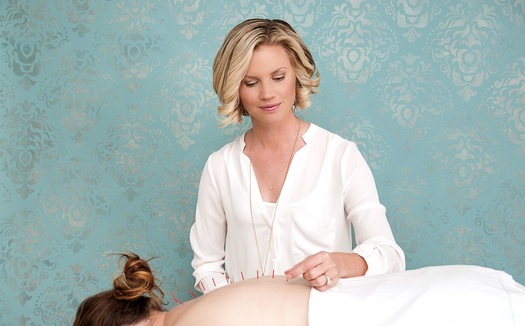An effective solution for opiod abuse has to match the key benefits of opioids: They are widely available, affordable and effective. That’s why acupuncture is gaining greater acceptance in both prevention and treatment of opioid addiction, according to Senia Tuominen, L.Ac., owner of Healing InSight in St. Paul, MN.
The dangers of addiction to opiates have grabbed headlines in recent months. The drug epidemic became a campaign issue in New Hampshire. According to the Substance Abuse and Mental Health Services Administration (SAMHSA), “A 2011 analysis by the Centers for Disease Control and Prevention found that opioid analgesic (pain reliever) sales increased nearly four-fold between 1999 and 2010; this was paralleled by an almost four-fold increase in opioid (narcotic pain medication) overdose deaths and substance abuse treatment admissions almost six times the rate during the same time period.”
The problem is two-pronged: Almost two million Americans misused their prescription painkillers in 2014. In addition, 4.3 Americans a month engage in non-medical use of prescription painkillers.
Acupunture to Prevent Addiction
For many people, opioid addiction starts with a prescription to painkillers for chronic or acute pain. “Patients demand fast relief, and in our culture, everyone assumes that will be a pill. But what patients really need is to eliminate their pain, not just cover it up,” Tuominen said. Patients and their doctors are learning that acupuncture is just as fast and is proven to provide safe and effective long-term pain relief. Studies show that acupuncture is twice as effective as standard care for low back pain, and for knee arthritis it can be more effective than physical therapy. The effects last beyond the course of treatment. For example, migraine headache patients experiencing relief saw no return of symptoms nine months later.
“People still assume that acupuncture is a form of faith healing or positive thinking. In fact, it’s one of the most clinically tested forms of medicine,” Tuominen said. “In Western terms, acupuncture creates microtrauma in the affected area, increasing blood flow and stimulating the body’s healing mechanism to decrease inflammation. It also down-regulates the brain’s response to pain,” Tuominen said. “One sixty-minute treatment will provide relief for back pain, neck pain, knee pain, headaches and/or abdominal pain. A series of treatments will provide lasting pain relief, especially in conjunction with changes in lifestyle–exercise and a low-inflammatory diet–that acupuncture can also support.”
Acupuncture also has a low risk of serious side effects, something that highly addictive opioids cannot claim. Abbott-Northwestern Hospital in Minneapolis recently became the first in the country to offer acupuncture in the emergency room, according to 5 Eyewitness News. The hospital turned to acupuncture after its own research discovered that 49 percent of patients were given painkillers during their visit or got a prescription for painkillers when leaving the ER. That’s playing with fire. As 5 Eyewitness News reported, “A national study shows 15 percent of the patients who are naive to painkillers and exposed to them for the first time in the ER become addicted within six to nine months.”
Acupuncture to Treat Addiction
For those who have become addicted to opioids, either through medical or non-medical use, acupuncture can help provide a path to freedom. Auricular acupuncture–tiny needles placed in the ear–is used in treatment centers like the Salvation Army as part of a comprehensive addiction treatment plan. “The good news is that we seem, finally, to be ready to treat addiction as a complex and hard-to-treat disease rather than simply labeling it a crime,” Tuominen said. “Acupuncture can be one of the many tools available in a multi-faceted treatment approach.”











